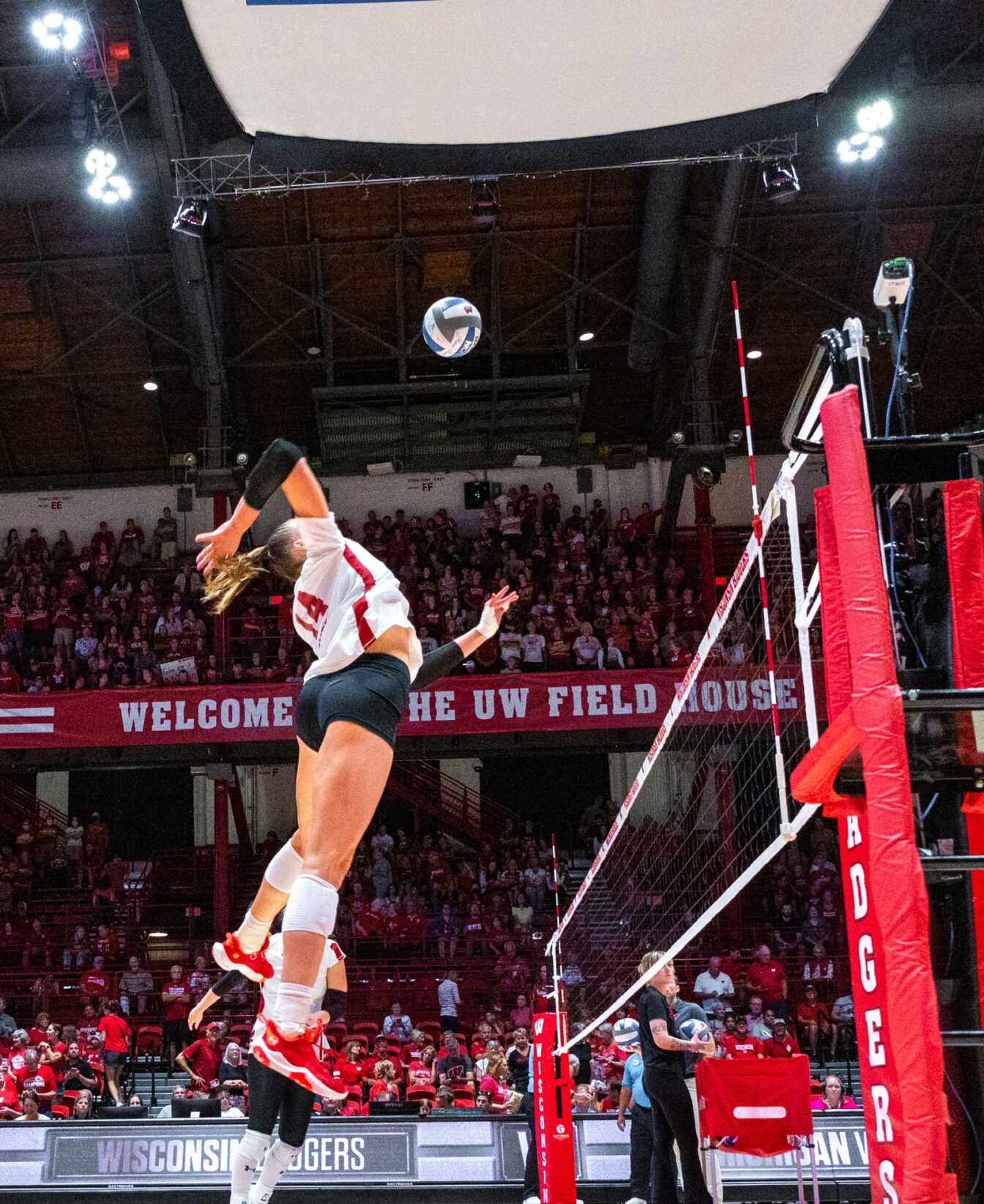“When you say Wisconsin, you’ve said it all!”
Along with 19 Nobel Prize winners, countless politicians and other notable figures, the University of Wisconsin is the birthplace of many superstar athletes and reporters. But most people only see what is broadcasted on national television — giving little publicity to sports like softball, lacrosse and soccer, in addition to the stars working in front of and behind the camera.
While the Badgers might not have the most stellar rep on the football field or the men’s basketball court right now, everybody knows women’s Badger volleyball is a force to be reckoned with. But the lack of broadcasting for these sports poses the issue of how to watch these games without being courtside. How can fans watch a past national championship team that isn’t on live television?
Thanks to Big Ten Plus, you can still watch and hear sports commentary on a streaming platform for games throughout the Big Ten.
Big Ten Plus sports broadcaster and UW student Rachel Cohen said there are many advantages that come from starting on a smaller network.
“Big Ten Plus benefits everyone,” Cohen said. “It’s a way for aspiring reporters, cameramen and producers to get hands-on experience in live production.”
The phrase, “It’s better to be a big fish in a small pond than a small fish in a big pond” has been proven by Cohen and the rest of her team’s efforts in Big Ten Plus. While obtaining her bachelor’s degree, Cohen is seen on screens all over the country for Badger sports fans tuning in.
While Big Ten Plus may not be nationally televised, it still increases sports viewership and overall popularity for sports that wouldn’t have been broadcasted if it weren’t for this network.
“It’s also a way to showcase more games that typically wouldn’t have any coverage if it weren’t on cable,” Cohen said.
She continues by highlighting both men’s and women’s sports are broadcasted on Big Ten Plus. These sports include some of the most watched Badger sports, including men’s basketball and hockey.
Live production coordinator Jake Zink said a typical game day for the crew is long. The team effort begins with a call time three hours before the game begins. In the control room, they start the show by having replay packages ready to air. Replay packages are on TV or the jumbotron and show plays that have already occurred. The control room also works on the “pre-produced elements,” such as pre-game interviews that may be viewed later on during the broadcast.
During game time, the main contributions that come from the cast and crew behind Big Ten Plus are shooting the game and developing the storylines.
“Everyone has their own role … for post-game, tie it up for the next game,” Zink said.
Zink said that what is aired on national television is what draws in the largest number of viewers. With the addition of USC and UCLA into the Big Ten, it becomes nearly impossible to air every single sports game played in the conference.
“[Due to the increase in Big Ten teams] a handful of men’s basketball games you can’t find on your TV is the way things are headed,” Zink said.
Big Ten Plus provides an innovative solution to this problem by allowing more people to view non-nationally televised sporting games in the Big Ten. Additionally, it provides a unique outlet for students interested in broadcast journalism to gain experience while entertaining college sports fans with the content they want to see.
Big Ten Plus allows the streamers of this century to enjoy the games of their choice while maintaining a presence on live television. Nowadays people find it more convenient to fall back on streaming services to watch shows rather than tune in live, which gives Big Ten fans opportunities to watch their teams play at times most convenient for them.
“[The goal of Big Ten Plus] is to give hands-on experience to students at Big Ten universities and produce high-quality broadcasts for people at home,” Zink said.


